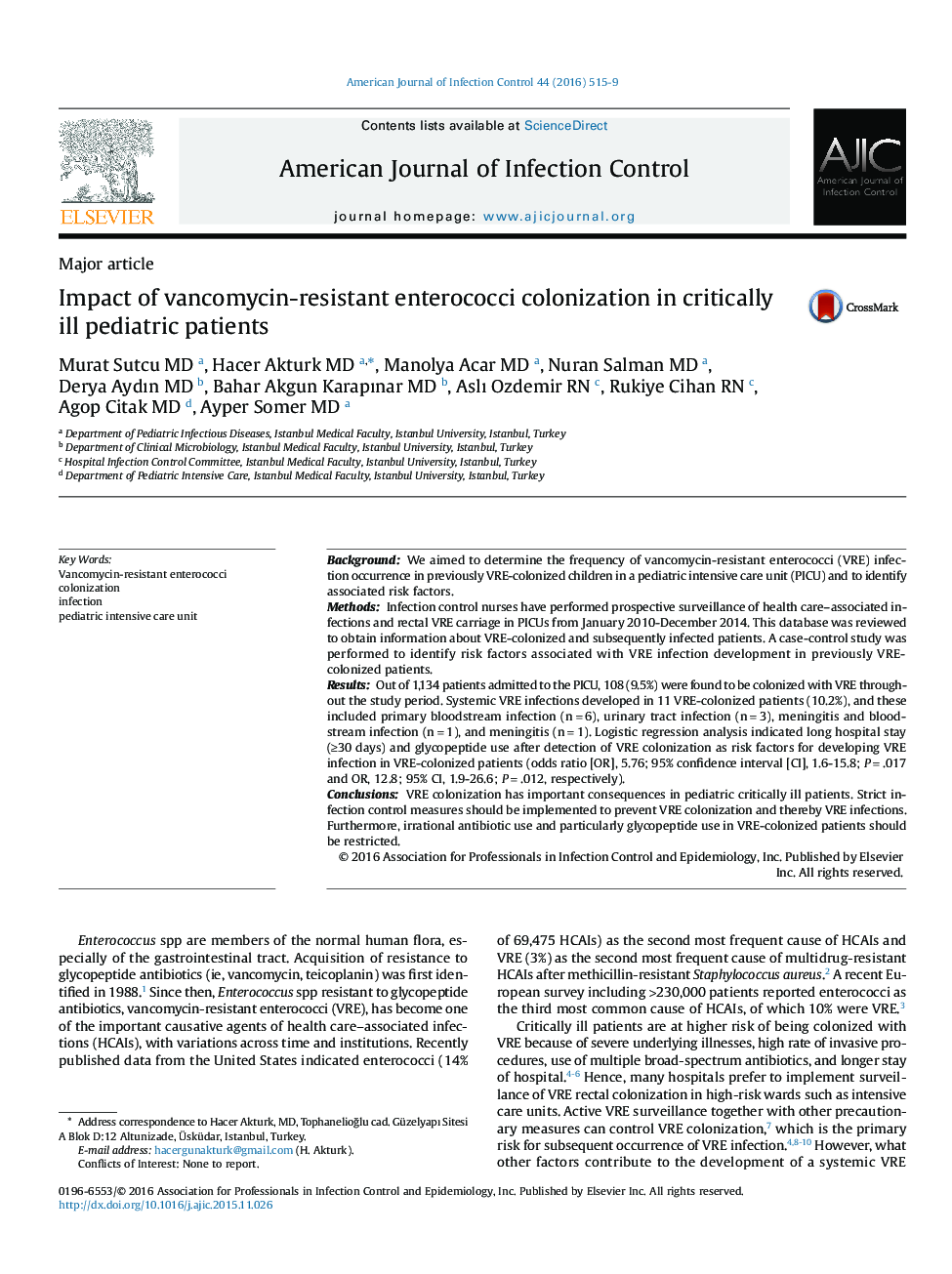| Article ID | Journal | Published Year | Pages | File Type |
|---|---|---|---|---|
| 5866438 | American Journal of Infection Control | 2016 | 5 Pages |
BackgroundWe aimed to determine the frequency of vancomycin-resistant enterococci (VRE) infection occurrence in previously VRE-colonized children in a pediatric intensive care unit (PICU) and to identify associated risk factors.MethodsInfection control nurses have performed prospective surveillance of health care-associated infections and rectal VRE carriage in PICUs from January 2010-December 2014. This database was reviewed to obtain information about VRE-colonized and subsequently infected patients. A case-control study was performed to identify risk factors associated with VRE infection development in previously VRE-colonized patients.ResultsOut of 1,134 patients admitted to the PICU, 108 (9.5%) were found to be colonized with VRE throughout the study period. Systemic VRE infections developed in 11 VRE-colonized patients (10.2%), and these included primary bloodstream infection (nâ=â6), urinary tract infection (nâ=â3), meningitis and bloodstream infection (nâ=â1), and meningitis (nâ=â1). Logistic regression analysis indicated long hospital stay (â¥30 days) and glycopeptide use after detection of VRE colonization as risk factors for developing VRE infection in VRE-colonized patients (odds ratio [OR], 5.76; 95% confidence interval [CI], 1.6-15.8; Pâ=â.017 and OR, 12.8; 95% CI, 1.9-26.6; Pâ=â.012, respectively).ConclusionsVRE colonization has important consequences in pediatric critically ill patients. Strict infection control measures should be implemented to prevent VRE colonization and thereby VRE infections. Furthermore, irrational antibiotic use and particularly glycopeptide use in VRE-colonized patients should be restricted.
